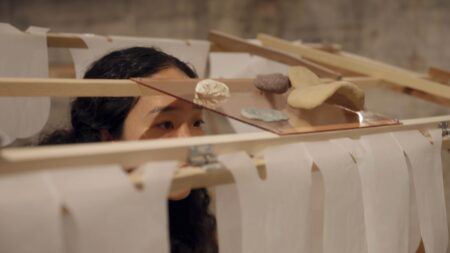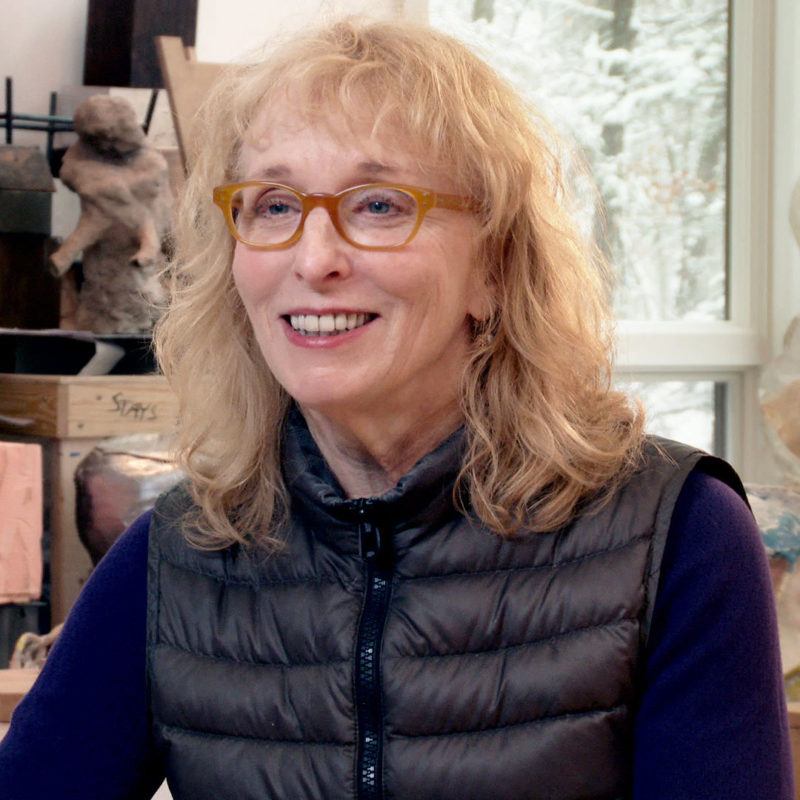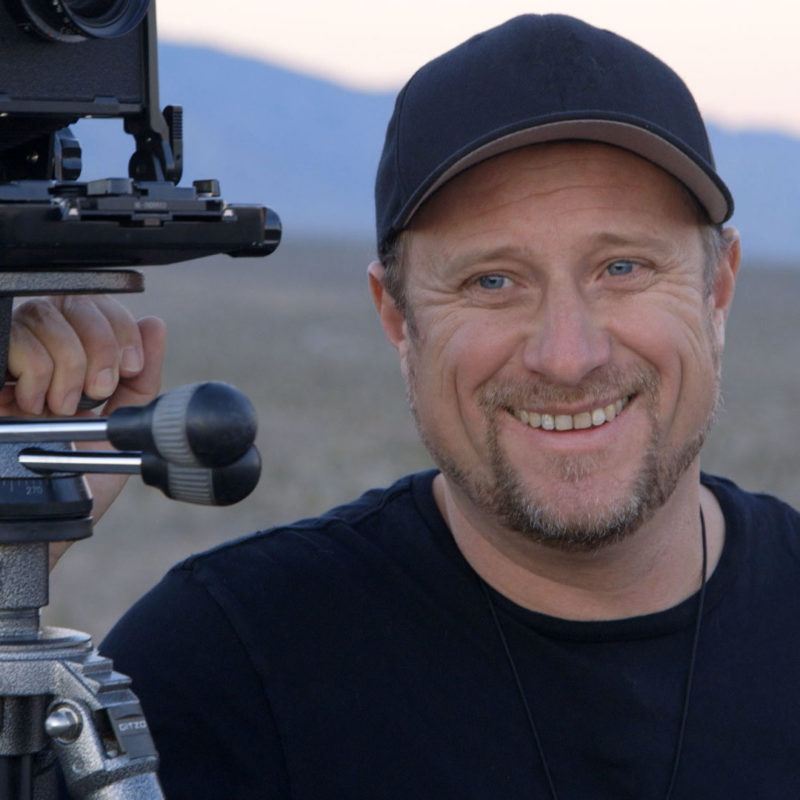Continue playing
(Time remaining: )
Play from beginning
Continue playing "{{ controller.videos[controller.getVideo(controller.currentVideo)].segmentParentTitle}}"
{{controller.videos[controller.getVideo(controller.currentVideo)].title}} has ended.
Secrets
How do artists make the invisible visible? What hidden elements persist in their work? Is it the artist’s role to reveal them, or not?
In this episode, artists share some of the secrets that are intrinsic to their work.
More information and creditsCredits
Series Created By: Susan Dowling & Susan Sollins. Executive Producer & Curator: Susan Sollins. Series Producer: Eve Moros Ortega. Associate Curator: Wesley Miller. Director of Production: Nick Ravich. Field Producer: Ian Forster. Editor: Mark Sutton. Director of Photography: Jarred Alterman, Justin Thomas Ostensen, & Joel Shapiro. Additional Photography: Marc Levy, Murat Otunc, Kyle Stryker, & Wilson Waggoner. Sound: Mert Aksuna, Michael Carmona, Neal Doxsee, Marcus Goudge, John McKallip, Roger Phenix, & John Zecca. Assistant Camera: Gillen Burch, Chris Jones, John Marton, & Irwin Seow.
Art Direction & Design: Open, New York. Online Editor: Don Wyllie. Composer: Peter Foley. Voiceover Artist: Jace Alexander, Dale Soules, & Joe Urla. Sound Mix: Cory Melious. Sound Edit: Matt Snedecor. Graphics Animation: CRUX Design. Artwork Animation: Stephanie Andreou. Assistant Editor: Carla Naranjo, Danny Rivera, Leana Siochi, Elizabeth J. Theis, & Bahron Thomas.
Artworks Courtesy of: Elliott Hundley; Trevor Paglen; Arlene Shechet; Andrea Rosen Gallery, New York; Metro Pictures, New York; Regen Projects, Los Angeles; & Sikkema Jenkins & Co., New York. Archival Footage & Photography: HIP/Art Resource, New York; MIT Museum; Ron Muller; & NASA.
Special Thanks: The Art21 Board of Trustees; Greg Allen; Anne Anka; David Berezin; Scott Briscoe; Allison Card; Russell Corona; Michaela Daly; Deborah Diemente; Framerunner; Heard City; Evan McQuaid Bedford; Jenna Miller Gratigny; Andrew Molleur; Museum of Art, Rhode Island School of Design, Providence; Pat Casteel Transcripts; Protocinema; Isidoro Quezada-Ramirez; Katie Rashid; Riley Robinson; Mari Spirito; & Valero Services, Inc.
Additional Art21 Staff: Cristiana Baik, Nicole J. Caruth, KC Forcier, Joe Fusaro, Jessica Hamlin, Jonathan Munar, Alexis Patterson, Heather Reyes, Diane Vivona, & Nechama Winston.
Public Relations: CaraMar Publicity. Station Relations: De Shields Associates, Inc. Legal Counsel: Albert Gottesman.
In Memoriam: Susan Sollins, visionary creator of Art21 and Art in the Twenty-First Century.
Major underwriting for Season 7 of Art in the Twenty-First Century is provided by National Endowment for the Arts, PBS, Agnes Gund, Bloomberg, The Andy Warhol Foundation for the Visual Arts, The Horace W. Goldsmith Foundation, The Robert Sterling Clark Foundation, The Anna-Maria and Stephen Kellen Foundation, Toby Devan Lewis, and Sikkema Jenkins & Co.
Closed captionsAvailable in English, German, Romanian, Italian, Japanese, Korean, Chinese, Italian
Through the Art21 Translation Project, multilingual audiences from around the globe can contribute translations, making Art21 films more accessible worldwide.
Interested in showing this film in an exhibition or public screening? To license this video please visit Licensing & Reproduction.
Arlene Shechet employs an experimental approach to ceramic sculpture—she tests the limits of gravity, color, and texture by pushing against the boundary of classical techniques, sometimes fusing her kiln-fired creations with complex plinths formed of wood, steel, and concrete. Variously sensual, humorous, and elegant, her clay-based vessels evoke the tension between control and chaos, beauty and ugliness, perfection and imperfection. Considering herself an installation artist who happens to make objects, Shechet focuses intently on ensuring that the display, sight lines, and relationships of the objects in her exhibitions change with every view while maintaining formal equilibrium.
Elliott Hundley draws inspiration for his paintings from diverse sources, but especially from his Southern heritage, steeped in family history. Many of his works also contain references to Greek tragedy and classical mythology, and to Japanese woodblock prints. He also stages improvisational photo shoots to generate imagery for his multi-panel tableaus, casting friends and family in roles from antiquity and various other sources. With these and other images anchored by thousands of pins to bulletin-board-like surfaces, his shallow reliefs form a palimpsest that teems with humble materials such as cut-up magazines, string, plastic, gold leaf, and other ephemera.
Trained as a geographer and photographer, Trevor Paglen makes the invisible visible by documenting the American surveillance state of the 21st century. He photographs distant military facilities, capturing extreme telephoto images of stealth drones; and turning his vision to the night sky, he traces the paths of information-gathering satellites. Mapping the ways in which the convergence of aesthetics, industrial design, and politics influence how we see and understand the world, he shows us images that go beyond straightforward journalistic documentation, giving voice to shifting ideas of the landscape of the American West, humankind’s place in the cosmos, and the surveillance state.
“This question of representation and technology and politics and ideology has always been a part of the history of art.”
Trevor Paglen



